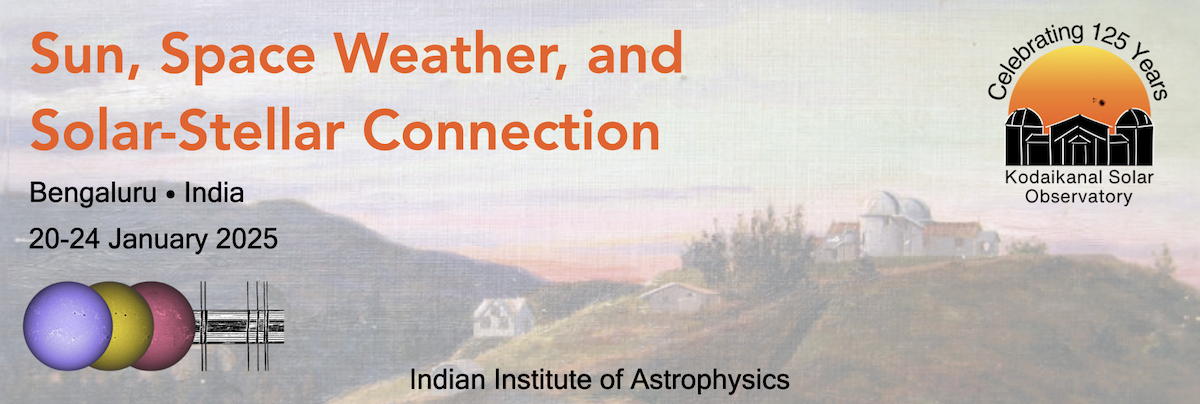Speaker
Description
Sunspots, dark features on the Sun’s surface, consist of a central, darker umbra and a surrounding, less dark, filamentary region called the penumbra. Their penumbra to umbra area size ratio is crucial for understanding sunspot radiation and its contribution to total solar irradiance. This study explores this penumbra-to-umbra area ratio (q) for sunspots across solar cycles 21 to 24 (1976-2017) using data from the Kodaikanal Solar Observatory. We analyzed variations in q across different latitude belts and opposite hemispheres. The results show that ‘q’ exhibits a distinct pattern across latitudes. The temporal evolution of q shows a small asymmetry between hemispheres and most prominent at the start of a new cycles. Analysis revealed periodicities ranging from 2 months to 11 years, including Rieger-type (130-190 days) and quasi-biennial oscillations (QBOs, 1.4-2.5 years). Overall, this study highlights the complex interplay of latitude, hemisphere, and solar cycle phase in determining the penumbra-to-umbra area ratio of sunspots.
| Contribution Type | Poster |
|---|---|
| Theme | Solar Magnetism in High-Resolution |

